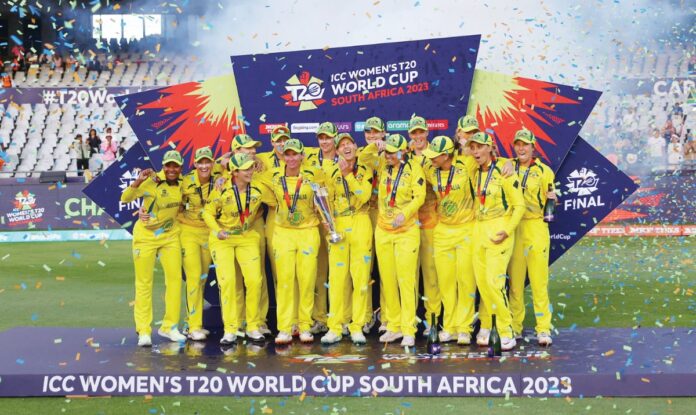Amid the welter of men’s T20 franchise leagues, Test series, qualifying groups for T20 and ODI World Cups, a women’s T20 World Cup has been played in South Africa. It had its share of surprises, not least of which was that the host nation reached the final, having lost its opening two matches, before losing to a strong Australian team.
This was a historic achievement, the first time a South African team has reached the final of a cricket World Cup.
South Africa’s men’s team has appeared in two T20 semifinals and four ODI semifinals, one of which against Australia in 1999 ended in a tie, their opponents progressing by virtue of finishing higher in their group.
Ten teams qualified for the seventh edition of the women’s T20 World Cup in 2023, divided into two groups of five. Australia comfortably topped Group 1 by winning all four matches. New Zealand, Sri Lanka and South Africa each garnered four points, the latter qualifying for the semifinals because of a superior net run rate. In Group 2, England also won four matches, being followed in second place by India.
Both semifinals were close run. In the first, India, chasing 173, looked to be on course for victory on 132 for the loss of four wickets after 14.3 overs. India’s captain, Harmanpreet Kaur, having scored 50, went for a straightforward second run, only to find her bat stuck in the turf as she went to run it into the crease.
In a disastrous instant, the momentum of India’s innings was broken. The remaining batters could not restore it and, despite 10 runs from the final over, Australia emerged victorious by five runs. This meant that Australia has appeared in all but the first of the eight women’s T20 finals.
South Africa chose to bat first against England in the second semifinal. After a slow start, Tamzin Brits top scored with 68 in a total of 164 for four, a critical 18 scored off the last over. Brits then took four catches, one spectacular, as her team recovered from England’s rapid start of 53 from the first five overs. Even at 132 for three after 16 overs, the odds were on England.
South Africa’s young quick bowlers held their nerve, Ayabonga Khaka claiming three wickets in the 18th over to put England under pressure. Shabnim Ismail, the world’s fastest women bowler, was entrusted with the final over, conceding only six of the 13 runs required, England closing on 158 for eight wickets.
South Africa’s captain, Sune Luus, hoped that the victory would be a turning point not just for women’s cricket in South Africa but for sport in general in the country. The team was inspired by a passionate and vocal local crowd at Newlands, Cape Town, where the final was also played.
However, their support could not overcome Australia’s dominance in the final. Electing to bat first, Australia scored 156 for six, of which Beth Mooney struck an unbeaten 74. The target proved to be too much for South Africa, who fell 20 runs short, despite a stirring 61 by Laura Wolvaardt.
Australia’s feat in achieving a sixth women’s T20 World Cup trophy and a third successive one has led some observers to classify them as the world’s most successful team of all time in any sport. They are also the holders of the women’s ODI World Cup, so their dominance is undisputed.
England, India, plus South Africa, now, are chasing them hard, but Australia always seems to find an extra gear. Financially, they have also benefited, receiving $1 million for their latest victory, out of total prize money for the tournament of $2.45 million. This compares with a total of $5.6 million for the 2022 men’s T20 World Cup, $1.6 million going to the winners.
Women’s cricket has come a long way in the past five years in terms of financial rewards, media coverage and geographical spread. The latest embodiment of the first two of these aspects is the Indian Women’s Premier League, which starts on March 4. At a frenetic auction on Feb. 14, the first player to be bought was the Indian star Smriti Mandhana, for $400,000, the highest of the event. In comparison, England’s Sam Curran was sold for the highest-ever sum of about $2.2 million at the men’s auction on Dec. 23, 2022.
A total of 448 women players were available, 87 of whom were bought. Each of the five franchises could buy a minimum of 15 and a maximum of 18 players, up to six of whom could be overseas, with a purse of $1.35 million. Unsurprisingly, half of the overseas purchases were of Australians, 12 of them members of the World Cup-winning squad in South Africa, with Ashleigh Gardner the highest priced at $386,000. The other purchases comprised seven English players, four South Africans, two New Zealanders, two West Indians and one American.
Along with the increase in opportunities for women players has come those for match officials. In the recent T20 World Cup, only women stood as umpires and referees in the tournament. This followed on from the inaugural women’s Under 19 T20 World Cup, held in January 2023, in which nine of the 15 appointed officials were women.
The final between India and England featured an all-women panel of match officials. Sixteen teams competed in the tournament, which featured teams that qualified for an International Cricket Council World Cup tournament at any level for the first time. These were Indonesia, Scotland, US, the UAE and Rwanda, the last two teams achieving landmark victories.
There was a time when the idea of women playing cricket was frowned upon. Now, this is an established feature of the sport and is set to grow apace, with opportunities for players and match officials. Already, women have officiated in men’s domestic competitions, but none has yet stood in men’s ODI or T20 World Cup tournaments. It can only be a matter of time.

